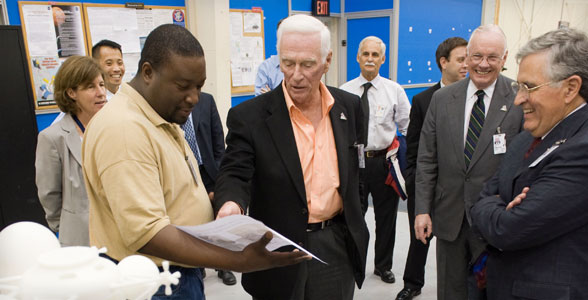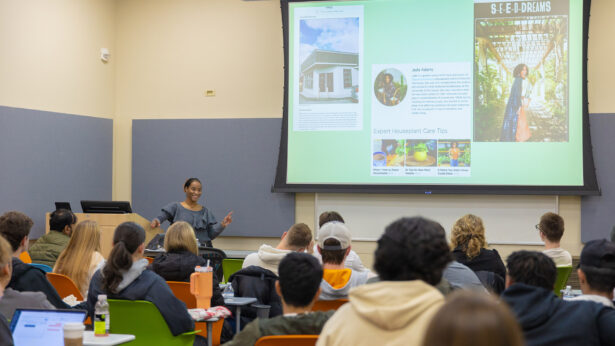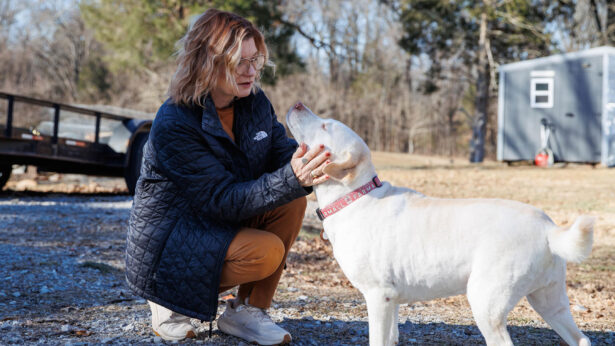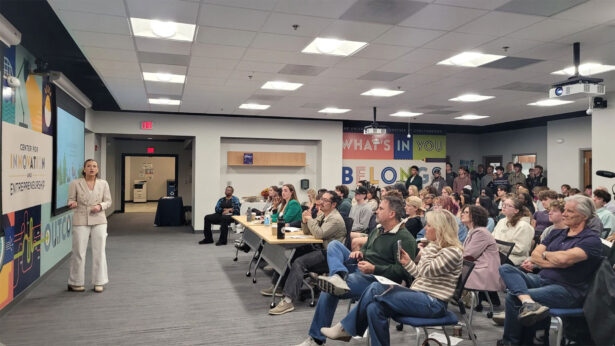Editor’s Note: The following article was written before the Obama administration recommended abandoning NASA’s lunar initiative.
By Diane Ballard
Dr. Robert Howard would like for you to vacation on the moon. In fact, he would like to vacation on the moon. But before that can happen, humans have a lot of work to do, and Howard is in the thick of it.
As NASA’s point person for spacecraft habitability, Howard (Space Institute ’02) envisions designs to make astronauts as comfortable and productive as possible and directs a team of architects, industrial designers, and engineers to that end. Howard, himself an engineer, also is the human factors lead for the Altair lunar lander, the lunar electric rover, and lunar outpost habitat for NASA’s Constellation Program.
He says learning to live on the moon would prepare humans for further space travel, with Mars as the most likely next step.
“I see the future, and I want it to get here sooner,” says the Houston, Texas, resident. “I want to advance spacecraft design to where anyone can go.” NASA’s current plan is for four astronauts to live and work on the moon for 6 months. The timetable for the mission is subject to available funding.
Howard’s work at Johnson Space Center in Houston concentrates on providing astronauts with living and working spaces that enhance their ability to function. Their quarters are small by necessity.
“Confinement is the number-one challenge to humans living on the moon,” Howard says. “The habitats must be large enough to work in but small enough to launch.” The proposed living space in the lunar lander Altair would measure about 16 feet in diameter.
“You have to keep in mind that this is the astronauts’ entire world. Here on Earth, you drive somewhere, get out, walk around, go in and sit awhile, then you get in your car and drive somewhere else. On the moon, the only time outside the living–working space would be walking in a space suit. There’s no such thing as getting a breath of fresh air.”
The need for privacy is also an issue, and Howard’s team has tried to design as much of it as possible in the limited space by using moveable fabric curtains.
“Some people criticize us for having large vehicles,” Howard says. “But when they see the prototype of the lunar lander, they can’t imagine how four people could live in that space for a week.
“The day is coming when we’ll build bigger ships. NASA has even explored using empty fuel tanks as habitats.” (Fuel tanks are the largest parts of spacecraft.) As more and more civilians want to go to the moon and are willing to pay the steep price, “that’s when habitats will expand,” Howard says. The moon’s reduced gravity (about one-sixth of Earth’s) is expected to allow for interesting opportunities in such areas as technology, therapy, and recreation. The moon is also an attractive destination because it’s relatively close to Earth, with a round trip possible in about 2 weeks.
Howard, 38, has wanted to work in the space program since he was a child in Greensboro, North Carolina. He worked at Johnson Space Center for eight summers while earning degrees in science and engineering at Georgia Tech, Morehouse College, North Carolina A&T State University, and UTSI in Tullahoma.
He credits UTSI with allowing him to “get very specific” about his career.
“At that time UTSI was one of only three universities that had a spacecraft systems curriculum at the doctoral level. Spacecraft design is still a new discipline.” Some of his favorite professors were space pioneer Gary Flandro, Frank Collins, and Alfonso Pujol.
Howard began his permanent employment with NASA in 2002. He is a leader in the National Society of Black Engineers, holding national offices and founding its Space Special Interest Group.
It’s estimated that by the year 3000, thousands of humans will be traveling, living, and working off-Earth. Howard is excited about preparing for that future, but he understands the vagaries of federal funding that may delay an actual NASA mission to the moon.
“From a technology standpoint, we could launch by 2017,” he says. “But 2030 might be more realistic.”



